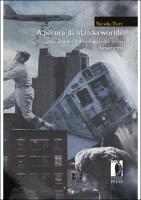A partire da «Underworld»
Don DeLillo e il romanzo del terzo Novecento
| dc.contributor.author | Turi, Nicola | |
| dc.date.accessioned | 2022-05-31T10:34:11Z | |
| dc.date.available | 2022-05-31T10:34:11Z | |
| dc.date.issued | 2020 | |
| dc.identifier | ONIX_20220531_9788855182690_865 | |
| dc.identifier | OCN: 1326257960 | |
| dc.identifier.issn | 2704-565X | |
| dc.identifier.uri | https://library.oapen.org/handle/20.500.12657/55581 | |
| dc.language | Italian | |
| dc.relation.ispartofseries | Moderna/Comparata | |
| dc.subject.other | Don DeLillo | |
| dc.subject.other | Underworld | |
| dc.subject.other | american fiction | |
| dc.subject.other | paranoia | |
| dc.subject.other | collective novel | |
| dc.subject.other | waste | |
| dc.title | A partire da «Underworld» | |
| dc.title.alternative | Don DeLillo e il romanzo del terzo Novecento | |
| dc.type | book | |
| oapen.abstract.otherlanguage | The volume is a commentary on Don DeLillo’s hypertrophic novel Underworld (1997). Starting from the analysis of the text – which intertwines several plots, locations and point of view –, Nicola Turi retraces the entire production of the author to follow the evolution of themes (paranoia, nuclear threat, alienation, violence…) and textual strategies. At the same times he considers some widespread trends in the contemporary novel which Underworld, narrative tableau of the United States of the second twentieth century, embodies or anticipates: the resumption of the collective novel; the construction of characters drawn from reality; the continuous interaction between verbal representation and image (both static and moving). | |
| oapen.identifier.doi | 10.36253/978-88-5518-269-0 | |
| oapen.relation.isPublishedBy | bf65d21a-78e5-4ba2-983a-dbfa90962870 | |
| oapen.relation.isbn | 9788855182690 | |
| oapen.relation.isbn | 9788855182683 | |
| oapen.relation.isbn | 9788855182706 | |
| oapen.relation.isbn | 9788855182713 | |
| oapen.series.number | 35 | |
| oapen.pages | 142 | |
| oapen.place.publication | Florence |

